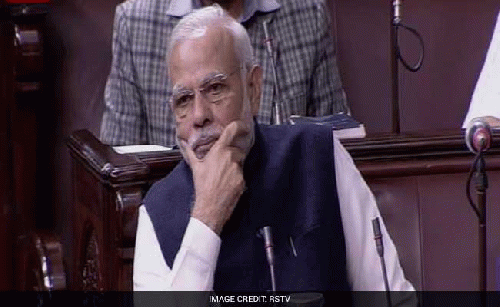Prime Minister Mr. Narendra Modi's 'bold move' demonetizing the 500 and 1000 rupee notes from November 9 th 2016 has sent the Indian Nation into a tizzy. While many people acknowledge that it is a much-needed move to curb the black money menace threatening the nation's development, there are genuine reservations on its successful outcome. Now into the fourth week post-demonetization, the nation-wide scenes of long queues in banks and in front of ATMs are gradually subsiding but the common man is still badly hit. The discontent among people especially in the rural areas is snow-balling into nation-wide protests.
Mr. Narendra Modi's government now finds itself trying to explain why all the inconvenience faced by the common man was not anticipated and preventive measures taken. Though the Government is trying to convey that the hardship would be temporary and the economy would emerge stronger in a few months from now, valid doubts remain. There is the distinct possibility that the entire demonetization exercise could turn out to be a well-intentioned exercise gone awry.
The origins of black or unaccounted money needs to be understood and taken into account if it is to be effectively curbed. It arises from the human tendency to circumvent rules of the society and enjoy rights without responsibility. There is a spectrum of human behaviours involved in this. At one end, we have the clearly anti-social elements that do not believe in paying taxes and fulfilling their social obligation. Then, we have 'going with the trend' people who make it a habit to evade taxes on the grounds that there are many who get away doing the same. At another end, we have people who find it difficult to make both ends meet and feel that the tax payable by them is too much of a burden.
It would have made sense if the government had targeted only the first category -- the clearly anti-social. Such people hoard cash with impunity and spend extravagantly. Demonetization would have affected them first if their main route of escape had been closed by making the 500 and 1000 rupee notes invalid for real estate and gold businesses and those involving very high value purchases (say more than 10 lakhs).
The second category of 'going with the trend' people is already being targeted by high value purchases automatically requiring PAN details and similar such measures that ensure compliance. The third category of people who feel over-burdened can be made more tax-compliant by lowering the tax slabs and making income-tax payments even more people-friendly.
By allowing the continued use of 500 and 1000 notes for all purposes except for gold, real estate and very high value purchases, the Govt. would have achieved the goal of curbing the use of black money to a large extent. Simultaneously large-scale disruption of economy and life of the people could have been avoided. Unaccounted and counterfeit 500 and 1000 notes can be removed from the system in a time-bound manner by replacing the existing notes over several months if the exchanged notes are properly accounted for.
Instead of going in for a predominantly monetary approach, had the Govt. gone in for a more sensitive psychological cum monetary approach, the way things have unfolded in the on-going demonetization process could have been different. The rural economy in particular is badly hit by the demonetization move. Mr. Modi's push for cashless economy makes sense in the long run, but to push for it in the present circumstances would be counter-productive. The goodwill of the people towards the 'bold move' should not be dissipated by going overboard in the name of demonetization.






